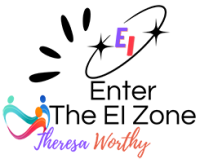Inclusion begins within ourselves as we learn to recognize and address our own biases and emotions. Self-awareness and emotional intelligence are two key skills that can help us become more inclusive individuals. Inclusion is the process of creating an environment or culture where everyone feels valued, respected, and supported, regardless of their background, identity, or experiences.
Self-awareness is the ability to understand our own thoughts, feelings, and behaviors. By developing self-awareness, we can better recognize our prejudices and beliefs, and how they may impact our interactions with others. For example, if we are aware that we have a tendency to make assumptions about people based on their appearance or how they speak, we can consciously work to challenge those assumptions and be more open-minded.
Emotional intelligence, on the other hand, is the ability to recognize and understand not only our own emotions, but also the emotions of others. It involves being able to empathize with others, communicate effectively, and build strong relationships. For example, if we are able to recognize when someone is feeling excluded or marginalized, we can take steps to make them feel more included, such as by actively listening to their concerns or seeking out their input.
Together, self-awareness and emotional intelligence can help us create more inclusive environments in a variety of settings, from the workplace to our personal relationships. Here are a few example of how these skills can be applied:
- In the workplace, a self-aware, emotionally intelligent leader might recognize that they have a tendency to favor certain employees over others. They might take steps to ensure that they are giving everyone equal opportunities and support, such as by providing training or mentorship programs for all employees, not just those they feel are most promising.
- In a social setting, someone with strong self-awareness and emotional intelligence might recognize when they are dominating the conversation or excluding others. They might take steps to actively involve others in the conversation, such as by asking open-ended questions or seeking out input from quieter individuals.
- In a classroom setting, a teacher with strong self-awareness and emotional intelligence might recognize when they are unintentionally favoring certain students over others. They might take steps to ensure that they are providing equal opportunities for all students to participate and succeed, such as by using a variety of teaching methods that appeal to different learning types.
Overall, self-awareness and emotional intelligence are critical to the success of inclusion efforts. Developing self-awareness and emotional intelligence is an ongoing process that requires both introspection and active effort. By recognizing and addressing our own biases and emotions and taking positive action to ensure that all are given equal opportunities and support, we can become more inclusive individuals and create more inclusive cultures.
Inclusion begins within ourselves.


